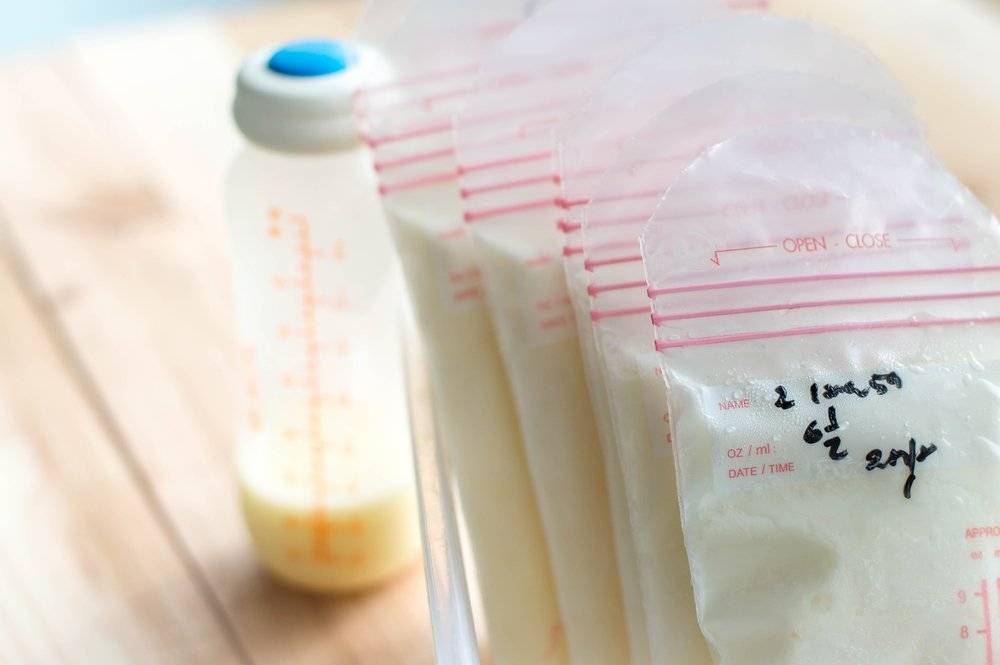As a breastfeeding mother, you may have questions about how to properly handle and store breast milk to ensure its safety and freshness. One common question that arises is whether warmed breast milk can be refrigerated again.
Breast milk can be expressed and stored for later use, allowing mothers to continue providing breast milk even when they are not able to breastfeed directly. However, proper handling and storage of breast milk are crucial to maintain its safety and quality.
In this article, we will explore this topic in detail, answering common questions related to breast milk storage and safety.
What is the Correct Temperature to Warm Up Milk?
Breast milk can be stored in the refrigerator or freezer to keep it fresh for later use. When it is time to feed the baby, many parents choose to warm the milk to a comfortable temperature.
The recommended way to warm breast milk is to place the bottle or bag of milk in a container of warm water. Avoid using a microwave or boiling water, as these methods can cause uneven heating and destroy the valuable nutrients in breast milk.
The ideal temperature for warming breast milk is around body temperature, which is approximately 98.6°F (37°C). You can test the temperature of the milk by dripping a few drops on your inner wrist. It should feel warm, not hot. If the milk is too hot, allow it to cool down before feeding it to your baby.
Can I Reheat Breast Milk?
Once breast milk has been warmed, it is not recommended to reheat it. If your baby does not finish the bottle within 2 hours, discard the leftover milk.
Can Warmed Breast Milk Be Refrigerated Again?
Many parents wonder if warmed breast milk can be refrigerated again. Here is the answer!
According to the AAP, once breast milk has been thawed to room temperature or warmed, it should be consumed within 2 hours, and it should not be refrigerated again. It is also not recommended to reheat the same batch of breast milk multiple times, as this can increase the risk of bacterial growth and spoilage. It is best to warm only the amount of breast milk that you think your baby will consume in one feeding, to avoid wasting any leftovers.
Drinking leftover breast milk that has been warmed and not consumed within the recommended time frame can pose risks to your baby’s health. When breast milk is warmed, it creates an ideal environment for bacteria to multiply rapidly. If the milk is left at room temperature for too long, bacteria can grow and multiply, increasing the risk of contamination.
Contaminated breast milk can cause various health issues for your baby, including digestive problems, diarrhea, and even food poisoning. This is why it is crucial to follow proper storage and handling guidelines to ensure your baby’s safety and the quality of the breast milk they drink.
Can I Refreeze Breast Milk?
Breast milk should not be refrozen once it has been thawed, as this can cause changes in the milk’s composition and quality. If your baby does not consume all of the warmed breast milk, it should be discarded after 2 hours.
How Can I Store Breast Milk Safely?
Proper storage of breast milk is crucial to maintain its freshness, quality, and safety. Here are some guidelines for safe breast milk storage:
- Wash your hands thoroughly with soap and water before expressing or handling breast milk.
- Use clean containers, such as bottles or breast milk storage bags, to store the expressed breast milk. Avoid using regular plastic bags or disposable bottle liners, as they may not be safe for storing breast milk.
- Label each container with the date of expression to ensure that you use the oldest milk first.
- Store breast milk in small amounts, such as 2-4 ounces, to reduce waste and allow for easy thawing and warming.
- Store freshly expressed breast milk in the refrigerator if you plan to use it within the next 4 days. If you plan to use it later, store it in the freezer.
- If storing in the refrigerator, place the breast milk towards the back of the refrigerator where it is coldest, and away from the door to maintain a consistent temperature.
- If storing in the freezer, use containers or breast milk storage bags specifically designed for freezing, and place them towards the back of the freezer where it is coldest.
- Thaw frozen breast milk in the refrigerator overnight or under cool running water. Do not thaw breast milk in hot water or in the microwave, as it can cause uneven heating and destroy some of the beneficial properties of breast milk.
- Once breast milk is thawed, use it within 24 hours, and do not refreeze it.
- Always perform a visual and smell check on the breast milk before feeding it to your baby. If it looks or smells off, discard it.
By following safe breast milk storage guidelines, you can ensure that your baby receives the best quality and safest breast milk possible. Consult your healthcare provider for further guidance and support in managing your baby’s breast milk.
For more content on breastfeeding, make sure you download the Kinedu app to access expert-led classes, activities and more!







